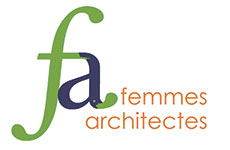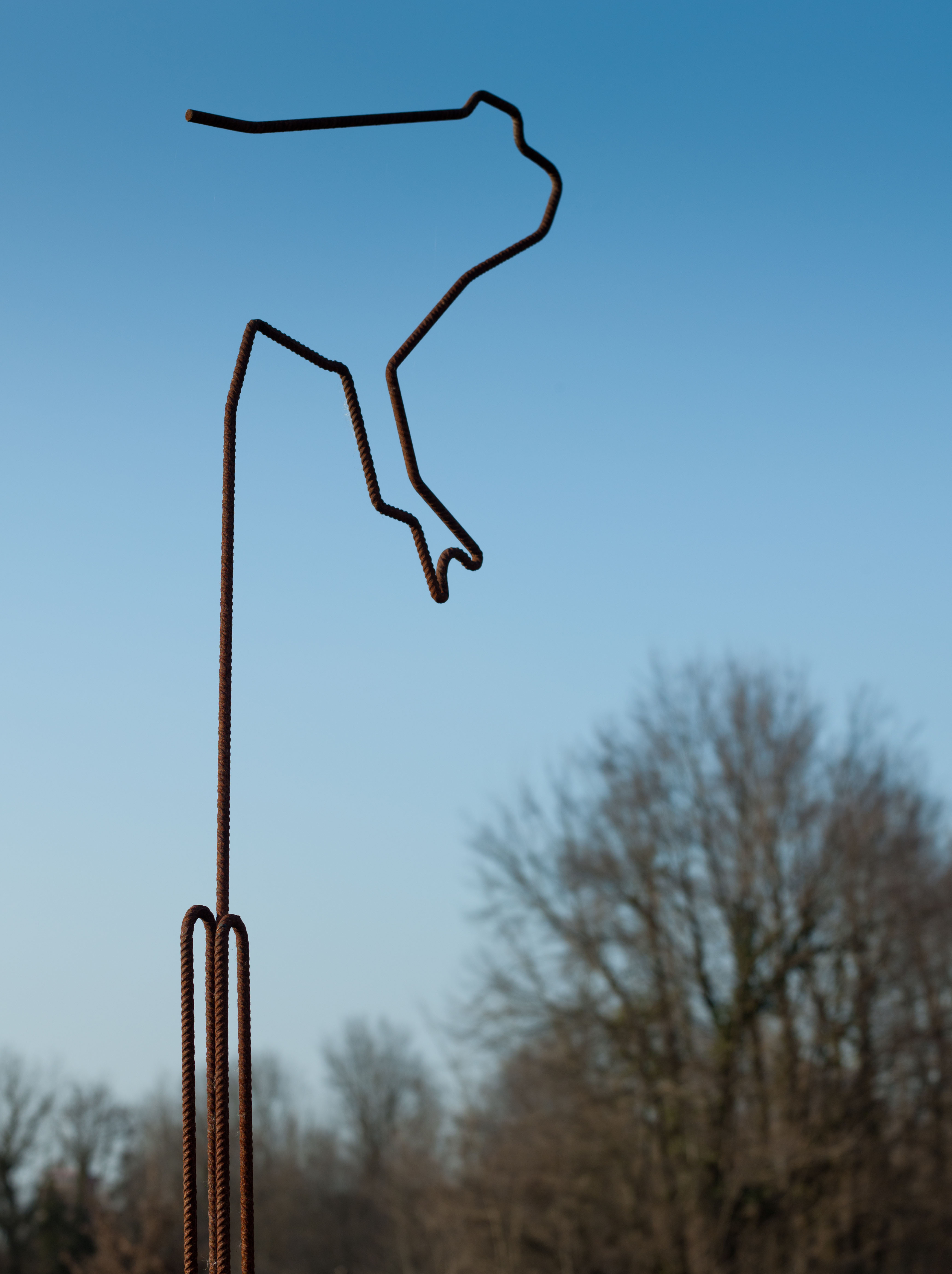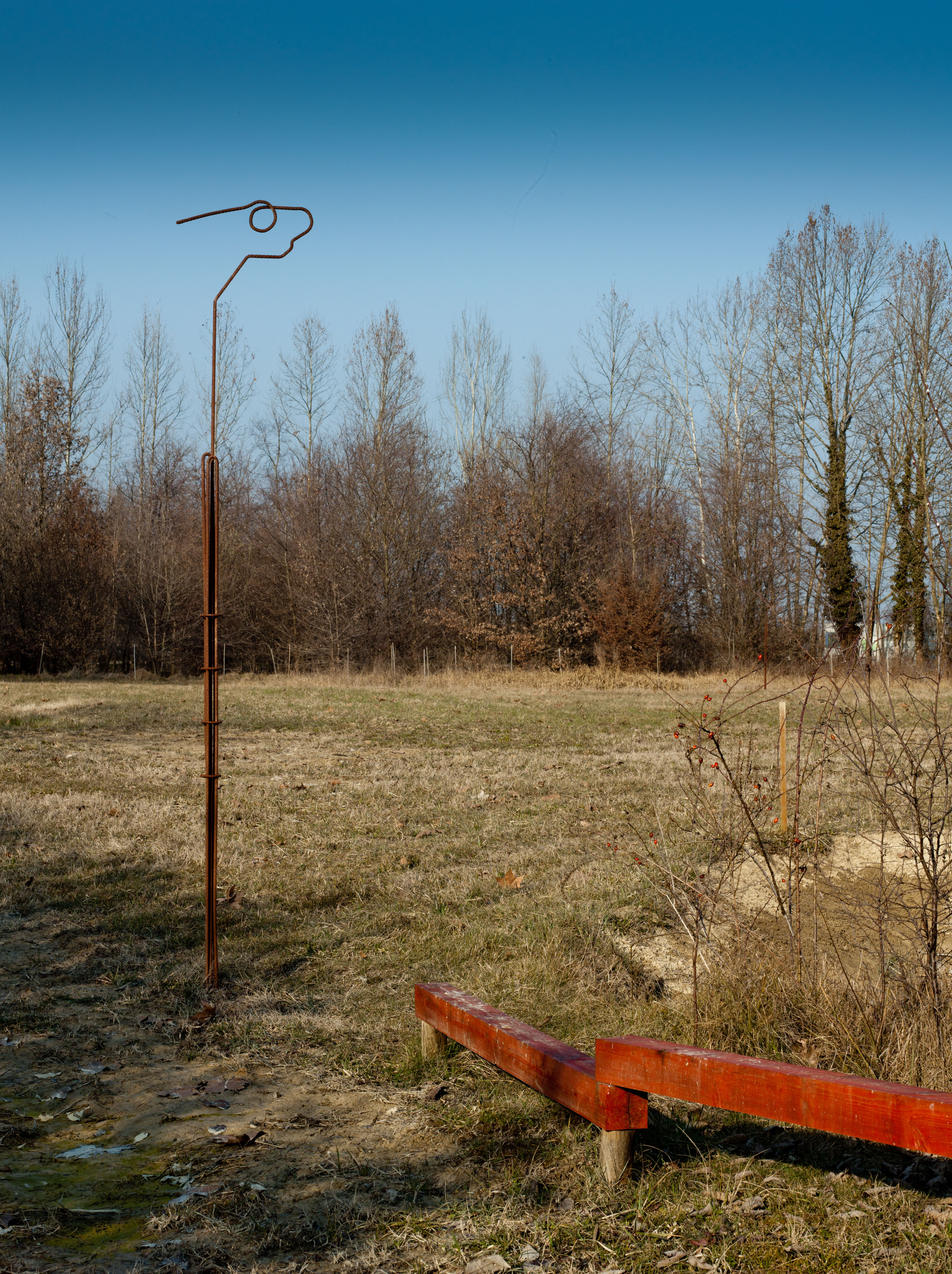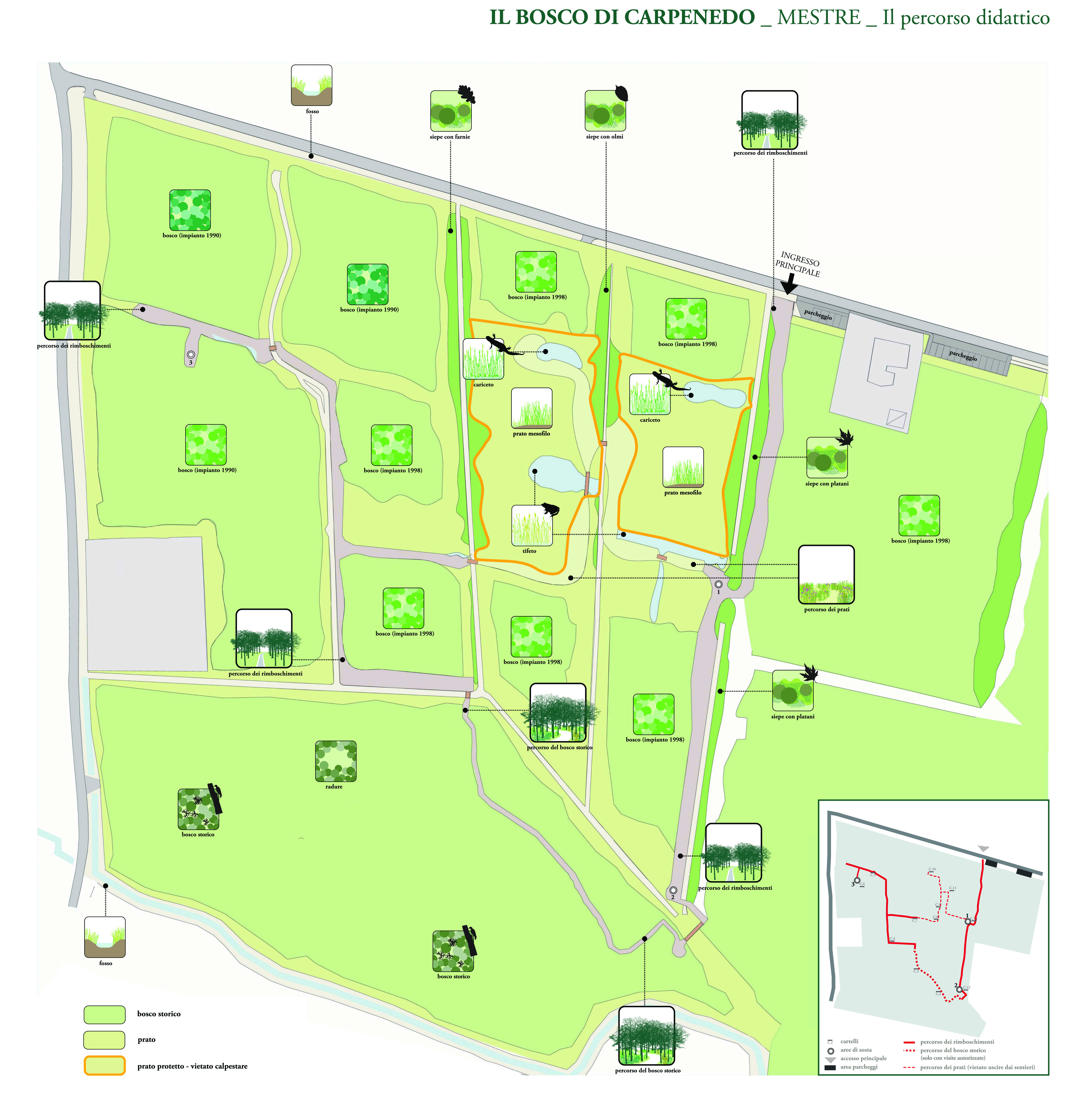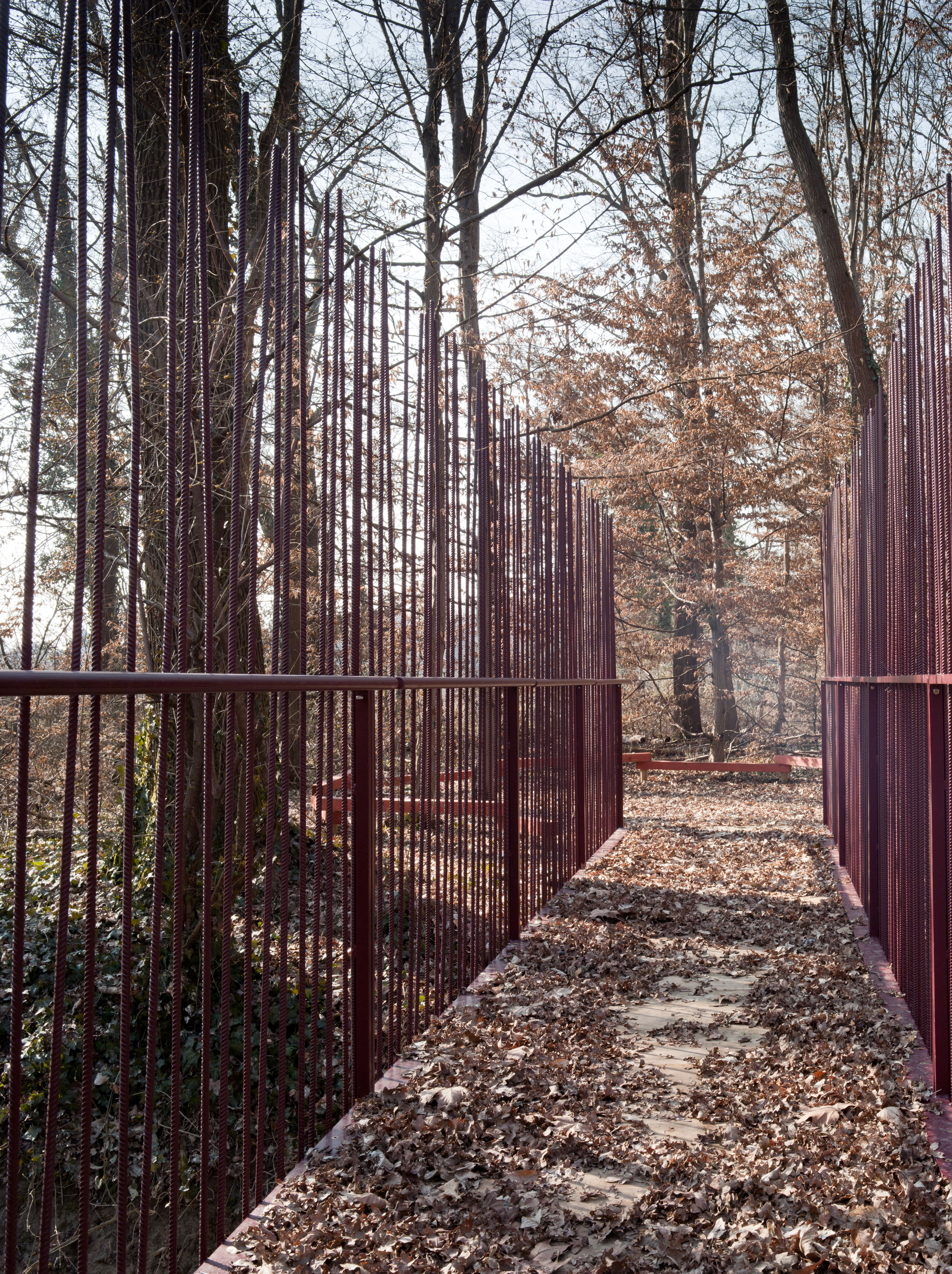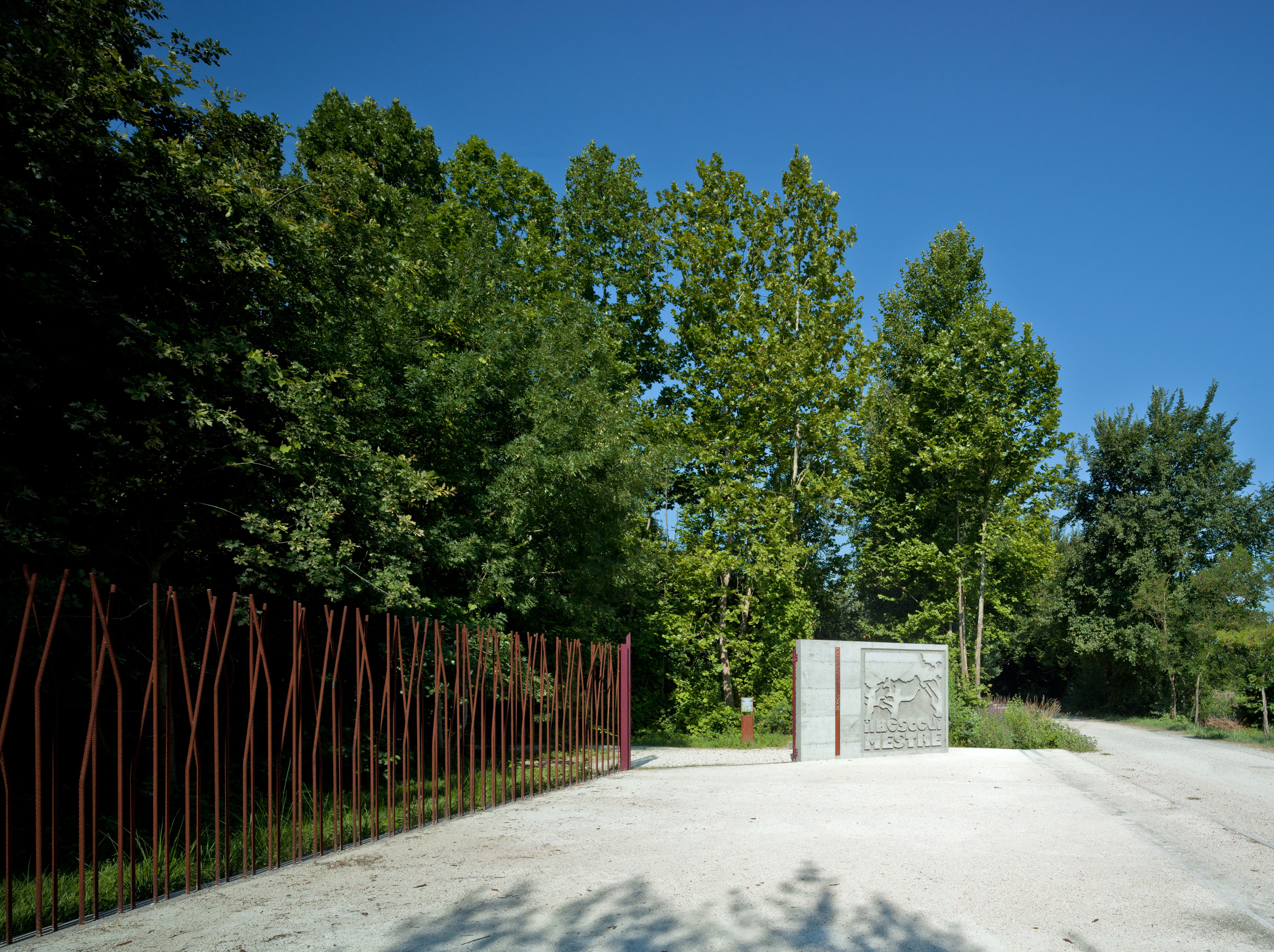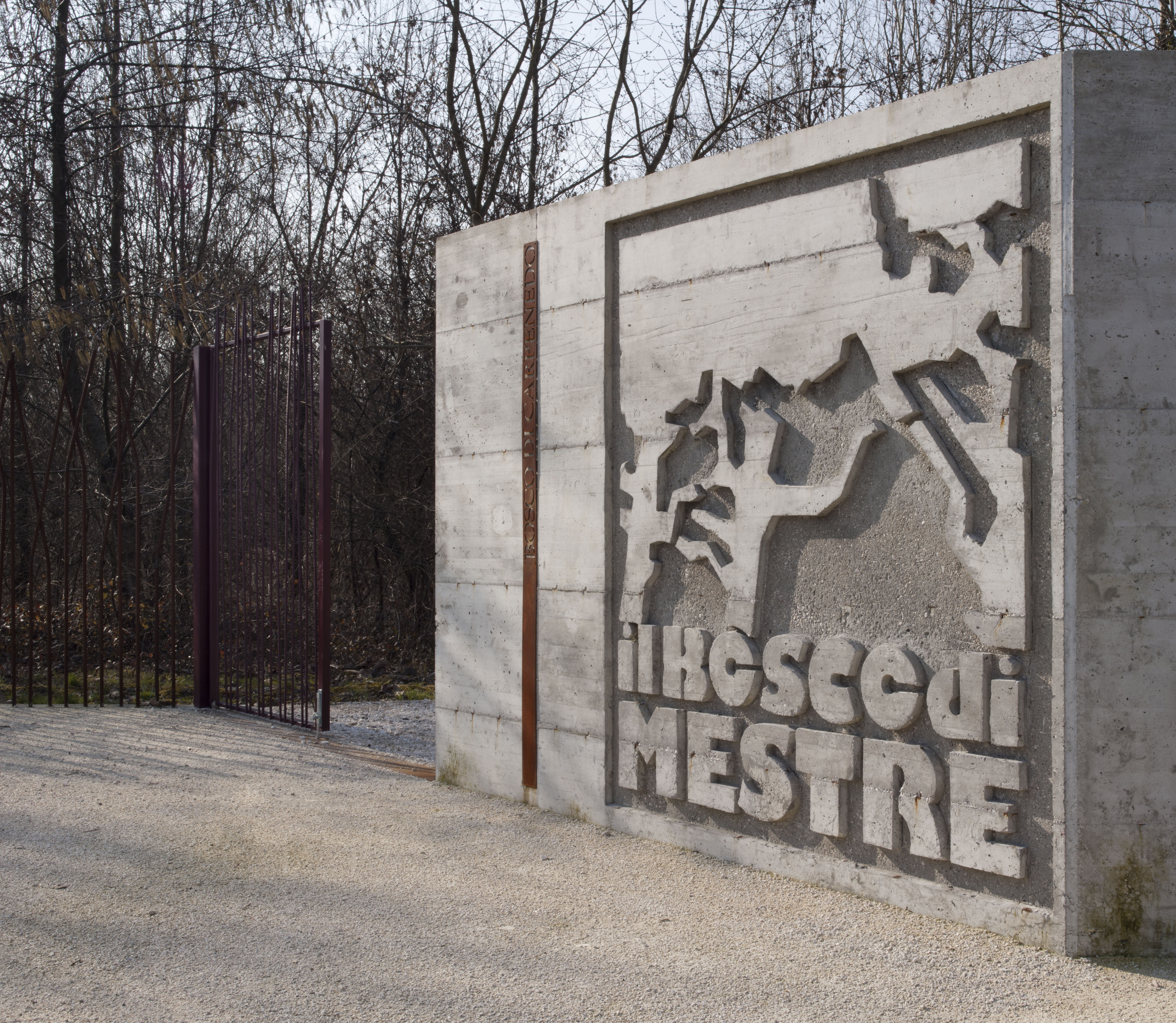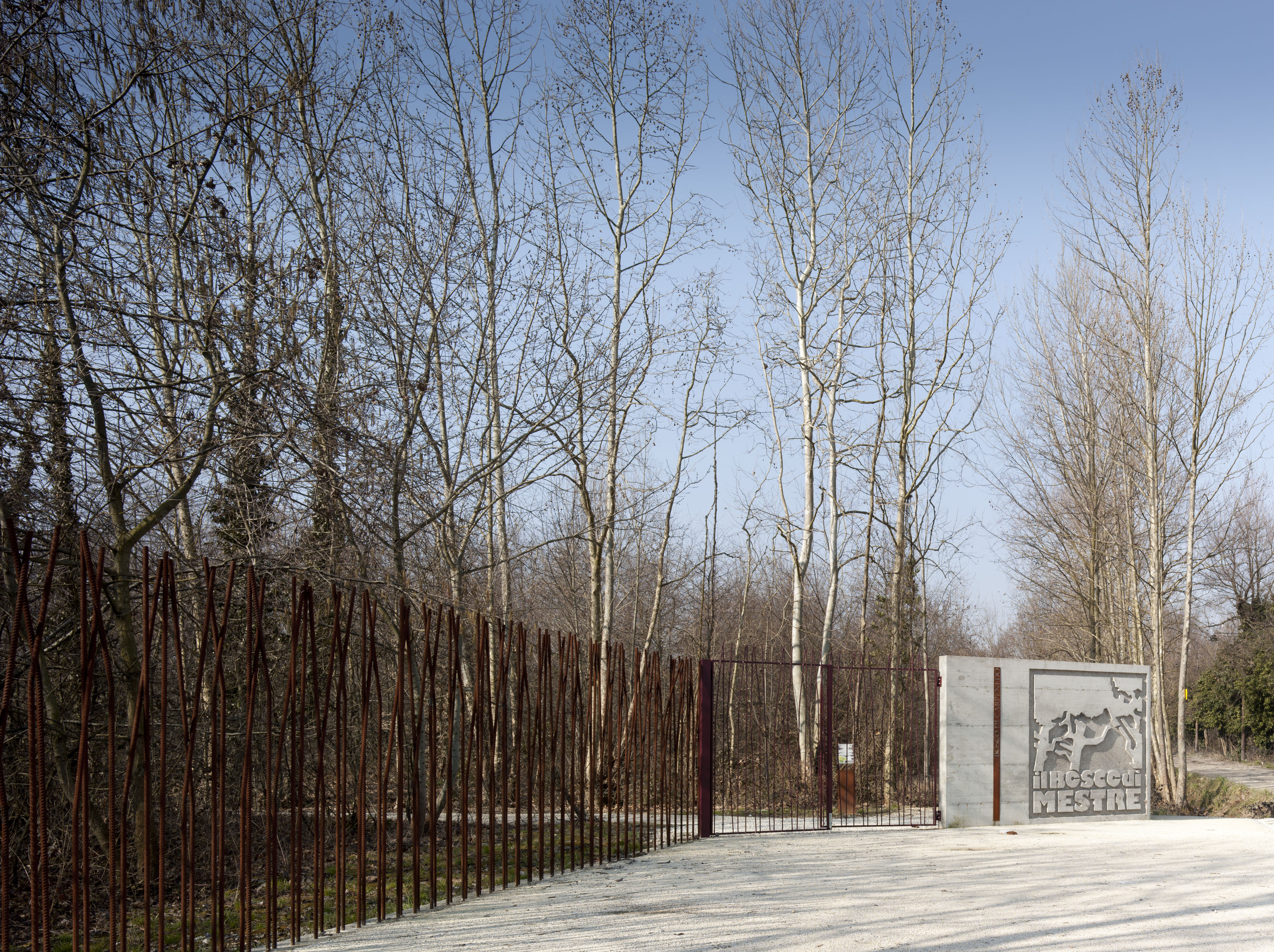Bosco di Carpenedo
The Bosco di Carpenedo is a protected wood with restricted access to preserve the fragility of its natural setting. The project started out by adapting the educational itinerary, which was no longer usable, and went on to redesign the entrance, the car park, the path, the bridges, the rest area and the signage. Visitors to the area are kept to a set path, which is clearly indicated by signage that is easy to understand and that changes together with the various types of setting, ground surface and path indicators. The ancient wood tour is identified by a thinning out of the trees and by the red path indicators that show that visitors are not to leave the path. Along the riforestation path in stabilised material, continuous elements indicate the edge of the canal. The meadow path is marked by the mowed grass and vertical path signs. While the horizontal signage in the wood contrasts with the verticality of the trees, the vertical signage in the meadows stands out against the horizontality of the grass cover. The entrance to the wood has been redesigned with the steel-rod fences simulates stylised plants motifs and the concrete logo for the wood with is facing in relief obtained by the contrast between the exposed and smooth surfaces. The works were made on a tight budget (€ 154.000) as evocative objects, clearly but discreetly superimposed on the landscape. The fence, panels, bridges and signage all adopt the same visual grammar, introducing special signs into the natural habitat. The elements appear between the trees like inhabitants of the wood.
"Progettare il recupero del territorio"
Premio per l’urbanistica e la pianificazione territoriale LUIGI PICCINATO
Sixth Edition
Jury: Ugo Soragni, Angelo Tabaro, Franco Braga, João Ferreira Nunes, Enrico Ramazzina
Special Mention
The project “Il Bosco di Mestre” is acknowledged for the following reasons: the intervention is praised for its lightness and elegance, which—through the use of creative solutions and forms—enhances and enriches the visitor’s experience in a natural environment of significant ecological value.
